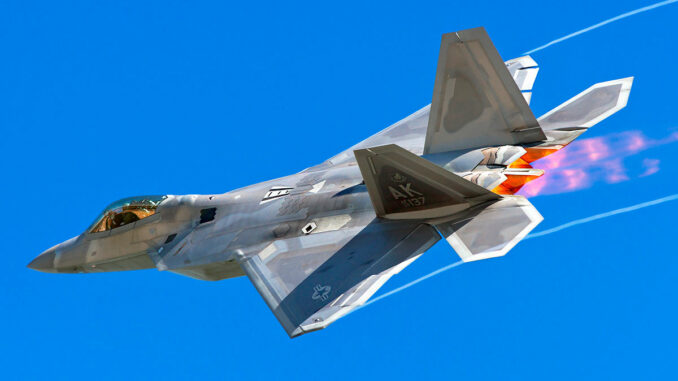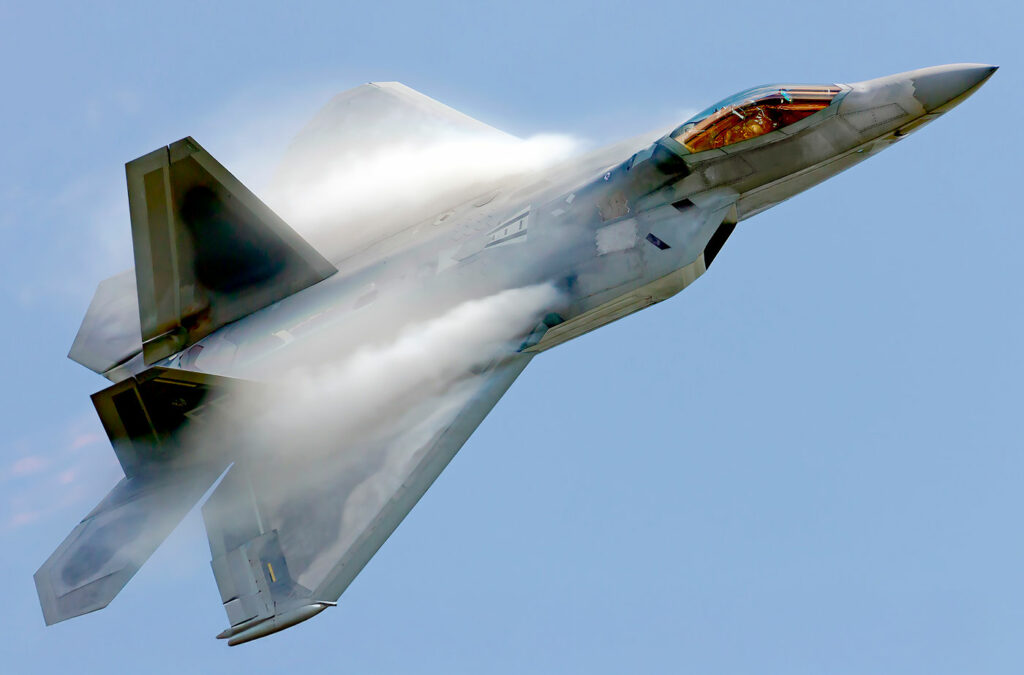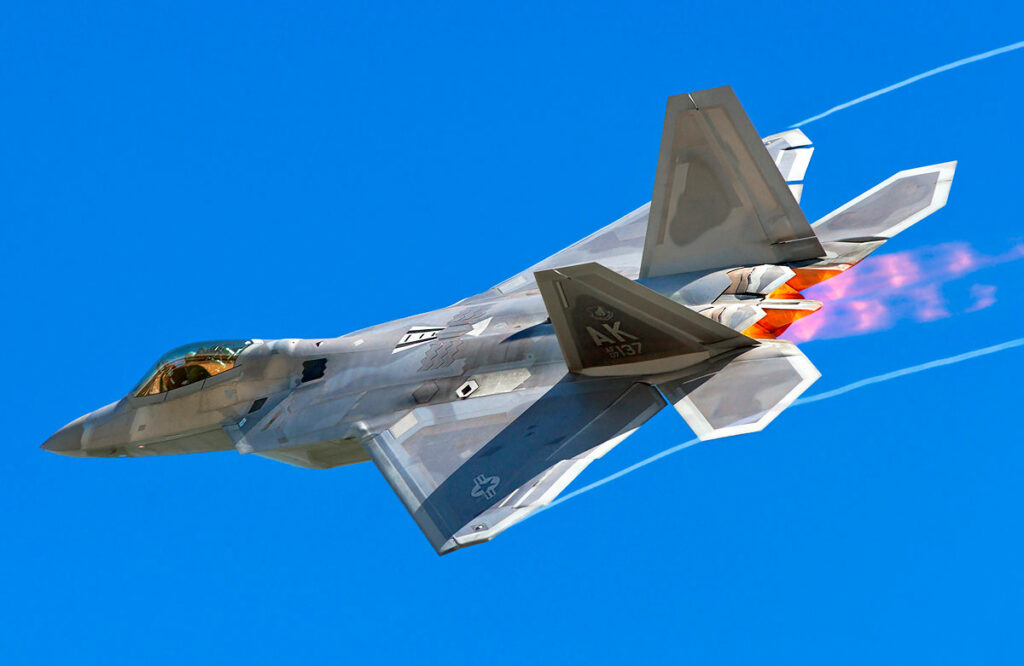
Pratt & Whitney is awarded a $1.5 billion contract to maintain F119 engines on the F-22 Raptor, aimed at improving operational availability and reducing costs.
RTX subsidiary Pratt & Whitney has signed a three-year, $1.5 billion contract to maintain the F119 engines powering the US Air Force’s F-22 Raptor fighter jets. The contract covers over 400 engines with more than 900,000 flight hours. The aim is to improve operational availability while reducing maintenance costs. The F119 is a fifth-generation turbojet engine, delivering over 156 kN of thrust, enabling the F-22 to maintain supersonic speeds without afterburning, a capability known as supercruising. Programs such as Usage Based Lifing (UBL) use real-time data to optimize maintenance and extend engine life.

Strategic contract for F119 engine maintenance
Pratt & Whitney, a division of RTX, was recently awarded a three-year, $1.5 billion contract to maintain the F119 engines powering the US Air Force’s F-22 Raptor fighters. The contract is aimed at improving operational availability and reducing maintenance costs for a fleet of over 400 engines with more than 900,000 flight hours. This initiative is crucial to maintaining the efficiency and air superiority of the US armed forces.
The F-22 Raptor, introduced in the early 2000s, is a fifth-generation fighter designed to ensure air superiority. Powered by two F119 engines, it is capable of reaching altitudes of over 19,800 meters with exceptional agility and speed. Regular maintenance and continuous improvement of these engines are essential to guarantee the aircraft’s optimum performance.
F119 engine specifications
The F119 engine is a twin-stream, twin-body, afterburner turbojet engine developed specifically for the F-22 Raptor. Each engine generates over 156 kN of thrust, enabling the aircraft to maintain supersonic speeds without the need for afterburning, a capability known as supercruising. This feature improves fuel efficiency and extends operational range, offering a strategic advantage in combat situations.
The F119 incorporates advanced technologies, including a two-dimensional thrust vectoring nozzle capable of deflecting thrust by ±20° on the pitch axis. This feature significantly improves the aircraft’s maneuverability, enabling it to perform complex maneuvers with greater precision. In addition, the engine is designed with a high thrust-to-weight ratio and uses advanced materials to withstand extreme temperatures and pressures, ensuring reliable performance under demanding operational conditions.
Maintenance programs and cost reduction
As part of this contract, Pratt & Whitney is implementing programs to optimize maintenance and extend the service life of F119 engines. One of these programs, Usage Based Lifing (UBL), uses real-time data to monitor engine performance and determine maintenance intervals based on actual usage. This approach helps reduce costs by avoiding unnecessary maintenance and precisely targeting servicing requirements.
In addition to the UBL program, improvements have been made to the engine’s kinematic performance by updating the engine control program. These improvements are designed to increase engine reliability and availability while reducing life-cycle costs. The use of advanced monitoring technologies and predictive diagnostics makes it possible to anticipate potential failures and carry out preventive interventions, thus minimizing aircraft downtime.

Strategic consequences of the contract
The award of this $1.5 billion maintenance contract to Pratt & Whitney underlines the US Air Force’s commitment to maintaining the F-22 Raptor fleet at optimum operational levels. In a geopolitical context marked by persistent tensions, the ability to rapidly deploy effective air forces is a key element of national defense strategy. Ensuring the availability and performance of the F-22 is therefore essential to maintaining U.S. air superiority.
In addition, this contract reflects a broader trend within the US armed forces to invest in the maintenance and modernization of existing equipment. Rather than focusing solely on the acquisition of new weapons systems, the emphasis is on optimizing current resources to meet contemporary challenges. This pragmatic approach maximizes operational efficiency while keeping costs under control.
Future prospects for the F-22 Raptor and F119 engine
While the F-22 Raptor continues to play a central role in U.S. air defense strategy, efforts are underway to ensure that its systems, including the F119 engine, remain state-of-the-art. Modernization initiatives could include the integration of new material technologies to improve engine durability, as well as the adoption of more advanced control systems to optimize performance and fuel efficiency.
At the same time, experience gained from predictive maintenance programs and ongoing improvements to the F119 could serve as a model for other military aircraft programs.
War Wings Daily is an independant magazine.